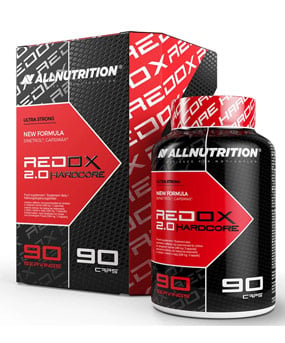Dorośli: 800 mg/kg masy ciała/dobę
Ogólnie przyjmuje się że białko powinno pokrywać 10-15% dziennego zapotrzebowania ustroju na energię - przy zbilansowanej diecie.
Wiadomym jest ze zapotrzebowanie zwyklego Kowalskiego ktorego jedynym wysilkiem jest trzymanie w reku pilota do TV i od czasu do czasu puszzcenia bąka - bedzie inne niz Nowaka ktory systematycznie poddaje sie treningowi.
W efekcie ćwiczenia zmienia sie tempo syntezy czy rozkładu białek i to doprowadza do podniesienia wymagań związanych z ich przyjmowaniem.
Duzo bedzie zależeć od typu treningu czy od intensywności.
Również inaczej bedzie wygladac zapotrzebowanie osob ktore pragną zrzucic tluszcz niz takich którzy chca za wszelka cenę przytyć.
Ale od początku - zapotrzebowanie dla zwyklego zjadacza chleba:
Meta-analysis of nitrogen balance studies for estimating protein requirements in healthy adults.
DESIGN: Data were gathered from published nitrogen balance studies that had as their primary objective either the estimation of basal or maintenance requirements or the testing of the adequacy of specific nitrogen intakes in healthy adults. These data were synthesized to characterize the distribution of individual protein requirements; the effects of climate of the study site, adult age, sex, and dietary protein source on individual requirements; and the midpoint of and the variability between the protein requirements of healthy persons.
RESULTS: Data for 235 individual subjects, each studied at >or= 3 test protein intakes, were gathered from 19 studies. The median estimated average requirement (EAR) of nitrogen from these data was 105 mg N x kg(-1) x d(-1). Individual requirements were found to fit a log-normal distribution. The median EAR was estimated as the median of this distribution, 105 mg N x kg(-1) x d(-1), whereas the 97.5th percentile (the recommended dietary allowance; RDA) was estimated from the distribution of the log of the requirement (after correction of the total observed variability to remove within-individual variability) as 132 mg N x kg(-1) x d(-1). No significant differences between the climate of the study site, adult age class, sex, or source of dietary protein were observed, although there was an indication that women might have a lower requirement than do men.
CONCLUSION: This meta-analysis provides new recommendations for dietary reference values, ie, an EAR (median) and RDA (97.5th percentile) for healthy adults of 105 and 132 mg N x kg(-1) x d(-1) (0.65 and 0.83 g good-quality protein x kg(-1) x d(-1)), respectively.
http://www.ncbi.nlm.nih.gov/pubmed/12499330
celem badania bylo uzyskanie odpowiedzi przy jakim spozyciu bialka utrzyma sie zerowy bilans azotowy (tyle samo sie spozywa ile sie traci)
odpowiedz dla 97,5% ludzkosci brzmi od 0,65-0,83g/kgmc
Jesli chodzi o osby czynnie uprawiające sport:
Protein intake and athletic performance.
For most of the current century, exercise/nutritional scientists have generally accepted the belief that exercise has little effect on protein/amino acid requirements. However, during the same time period many athletes (especially strength athletes) have routinely consumed diets high in protein. In recent years, the results of a number of investigations involving both strength and endurance athletes indicate that, in fact, exercise does increase protein/amino acid need. For endurance athletes, regular exercise may increase protein need by 50 to 100%. For strength athletes, the data are less clear; however, protein intakes in excess of sedentary needs may enhance muscle development. Despite these observations increased protein intake may not improve athletic performance because many athletes routinely consume 150 to 200% of sedentary protein requirements. Assuming total energy intake is sufficient to cover the high expenditures caused by daily training, a diet containing 12 to 15% of its energy from protein should be adequate for both types of athletes.
http://www.ncbi.nlm.nih.gov/pubmed/1763249
badania pokazaly ze zarowno u ludzi uprawiajacych sporty wytrzymalsciowe jak i silowe zapotzrebowanie na bialko wzrasta
-u wytrzymalościowców o ok 50-100%
-u silaczy wyniki nie sa tak oczywiscte i jasne
wiele nie osiaga lepszych wynikow bo spozywaja od 150-200%
Uznalo sie ze sporty powinni dostarczac ok 12-15% dziennego zapotrzebowania wlasnie z bialek
Protein and amino acids for athletes.
The main determinants of an athlete's protein needs are their training regime and habitual nutrient intake. Most athletes ingest sufficient protein in their habitual diet. Additional protein will confer only a minimal, albeit arguably important, additional advantage. Given sufficient energy intake, lean body mass can be maintained within a wide range of protein intakes. Since there is limited evidence for harmful effects of a high protein intake and there is a metabolic rationale for the efficacy of an increase in protein, if muscle hypertrophy is the goal, a higher protein intake within the context of an athlete's overall dietary requirements may be beneficial. However, there are few convincing outcome data to indicate that the ingestion of a high amount of protein (2-3 g x kg(-1) BW x day(-1), where BW = body weight) is necessary. Current literature suggests that it may be too simplistic to rely on recommendations of a particular amount of protein per day. Acute studies suggest that for any given amount of protein, the metabolic response is dependent on other factors, including the timing of ingestion in relation to exercise and/or other nutrients, the composition of ingested amino acids and the type of protein.
http://www.ncbi.nlm.nih.gov/pubmed/14971434
po pierwsze nie ma wiekszych przeciwskazan do spozywania wiekszych ilości bialka (wiekszych niz przewiduje RDA)
Po drugie wieksze ilosci bialka sa wymagane jesli celem jest hipertrofia mieśniowa (wzrost mięsni)
Sugeruje sie aby spozywac 2-3g/kgmc w celu polepszenia wynikow,ale duża zalezy od innych czynnkow - jak rodzaj bialka,czas spozycia czy inne
Influence of protein intake and training status on nitrogen balance and lean body mass.
The present study examined the effects of training status (endurance exercise or body building) on nitrogen balance, body composition, and urea excretion during periods of habitual and altered protein intakes. Experiments were performed on six elite bodybuilders, six elite endurance athletes, and six sedentary controls during a 10-day period of normal protein intake followed by a 10-day period of altered protein intake. The nitrogen balance data revealed that bodybuilders required 1.12 times and endurance athletes required 1.67 times more daily protein than sedentary controls. Lean body mass (density) was maintained in bodybuilders consuming 1.05 g protein.kg-1.day-1. Endurance athletes excreted more total daily urea than either bodybuilders or controls. We conclude that bodybuilders during habitual training require a daily protein intake only slightly greater than that for sedentary individuals in the maintenance of lean body mass and that endurance athletes require daily protein intakes greater than either bodybuilders or sedentary individuals to meet the needs of protein catabolism during exercise.
http://www.ncbi.nlm.nih.gov/pubmed/3356636
badana ilosc bialka potzrebna dla osob niecwiczacych,wytrzymalosciowcow i silaczy
wnioski:
silacze potrzebuja 1,12x tyle co osoby niecwiczace - czyli 1,05g/kgmc - jezeli chodzi im o 'gestosc' (sucha mase)
kiedy to wytrzymalościowcy potzrebuja 1,67x wiecej niz osoby niecwiczace
Evaluation of protein requirements for trained strength athletes.
Leucine kinetic and nitrogen balance (NBAL) methods were used to determine the dietary protein requirements of strength athletes (SA) compared with sedentary subjects (S). Individual subjects were randomly assigned to one of three protein intakes: low protein (LP) = 0.86 g protein.kg-1.day-1, moderate protein (MP) = 1.40 g protein.kg-1.day-1, or high protein (HP) = 2.40 g protein.kg-1.day-1 for 13 days for each dietary treatment. NBAL was measured and whole body protein synthesis (WBPS) and leucine oxidation were determined from L-[1-13C]leucine turnover. NBAL data were used to determine that the protein intake for zero NBAL for S was 0.69 g.kg-1.day-1 and for SA was 1.41 g.kg-1.day-1. A suggested recommended intake for S was 0.89 g.kg-1.day-1 and for SA was 1.76 g.kg-1.day-1. For SA, the LP diet did not provide adequate protein and resulted in an accommodated state (decreased WBPS vs. MP and HP), and the MP diet resulted in a state of adaptation [increase in WBPS (vs. LP) and no change in leucine oxidation (vs. LP)]. The HP diet did not result in increased WBPS compared with the MP diet, but leucine oxidation did increase significantly, indicating a nutrient overload. For S the LP diet provided adequate protein, and increasing protein intake did not increase WBPS. On the HP diet leucine oxidation increased for S. These results indicated that the MP and HP diets were nutrient overloads for S. There were no effects of varying protein intake on indexes of lean body mass (creatinine excretion, body density) for either group. In summary, protein requirements for athletes performing strength training are greater than for sedentary individuals and are above current Canadian and US recommended daily protein intake requirements for young healthy males
http://www.ncbi.nlm.nih.gov/pubmed/1474076
zadaniem bylo okreslenie dziennego zapotrzebowania na bialko u osob nietrenujacych (S) i trenujących (SA)
przydzielono ich do 3 grup
malo bialka=0,86g/kgmc
srednia ilosc=1,4g
duza ilosc=2,4g
wnioski:
zero bilans azotowy dla grupy S wynosil 0,69g/kgmc!
dla grupy SA (osoby cwiczace) zerowy bilans azotowy wynosikl 1,41g/kgmc
sugerowana dzienna dawka dla grupy S wynosi 0,89g
dla grupy SA 1,76g
spozycie malej ilosci bialka (0,86g) przez osoby cwiczace skutkowalo w zmniejszeniu syntezy bialka w prownaniu do sredniej i wysokiej grupy
srednie spozycie bialka (1,4g)skutkowalo zwiekszeniem syntezy powrownywalnej z wysokim spozyciem bialka (2,4)
z tym ze wysokie spozycie bialko dodatkowo skutkowalo zwiekszanym utlenianiem leucyny co spowodane bylo spozyciem wiekszej ilosci bialka
dla grupy S (niecwiczace) spozycie zarowno sredniej jak i wysokiej ilosci bialka powodowalo 'przedawkowanie'
konkluzja jest taka - ze dla sportowcow dzienne zapotrzebowanie powinno byc wyzsze niz dla osob nieciwczacych
W miedzy czasie wyciagnieto wioski mowiace o tym ze wyniki nie sa dowartosciowane - to ze cwiczenia
(nawet lekkie) powoduja utlenianie leucyny - lecz nie pokazuje tego badania moczu
Isotopic determination of amino acid-urea interactions in exercise in humans.
We recently reported that in light exercise (30% VO2max) the oxidation of [1-13C]leucine was significantly increased but the rate of urea production was unchanged (J. Appl. Physiol: Respirat. Environ. Exercise Physiol. 52: 458-466, 1982). We have therefore tested three possible explanations for this apparent incongruity. 1) We infused NaH13CO3 throughout rest and exercise and found that, although altered bicarbonate kinetics in exercise resulted in greater recovery of 13CO2, the difference between rest and recovery was small compared with the increase in the rate of 13CO2 excretion during exercise when [1-13C]leucine was infused. 2) We infused [15N]leucine and isolated plasma urea N to determine directly the rate of incorporation of the 15N. During exercise there was no increase in the rate of 15N incorporation. Simultaneously, we infused [2,3-13C]alanine and quantified the rate of incorporation of 15N in alanine. We found that [15N]alanine production from [15N] leucine more than doubled in exercise, and by deduction, alanine production from other amino acids also doubled. 3) We tested our previous assumption that [1-13C]leucine metabolism in exercise was representative of the metabolism of other essential amino acids by infusing [1-13C] and [alpha-15N]lysine throughout rest and exercise. We found that the rate of breakdown of lysine during exercise was not increased in a manner comparable to that of leucine. Thus, these data confirm our original findings that leucine decarboxylation is enhanced in light exercise but urea production is unchanged
http://www.ncbi.nlm.nih.gov/pubmed/6420382
Urea kinetics in humans at two levels of exercise intensity.
A primed constant infusion of [15N2]urea was used to quantify the response of urea production to exercise at 40 and 70% maximal oxygen consumption on a treadmill. Total urea production, urea production from recycled N, urea production from nonrecycled N, and urea N recycled back into body protein were calculated. Most components of urea kinetics were unaffected by exercise at either intensity. The rate of urea reincorporated into protein was significantly increased during exercise and recovery at both levels of exercise. We conclude that exercise does not stimulate urea production but that there may be an accelerated reincorporation of urea N back into body protein.
http://www.ncbi.nlm.nih.gov/pubmed/8226527
Dlatego tez uznaje ze zapotrzebowanie osob cwiczacych wzrasta o ponad 100% wzgledem RDA (1.6-1.8 vs. 0.8 g/kg).
Choc i tak te dawki sa duzo duzo mniejsze nic przyjmuja dzisiejsi sportowcy.
Co do odpowiedniej dawki dobowej istnieje wiele zaleznosci - zaczynajac od dostarczanego zapotrezbowania,poprzez ilosc weglowodanow,wykonywany trening i jego dlugosc,jakosc bialka spozywanego,plec,wiek,czas spozywania posilkow.
Dzisiejsze wyniki badan wskazuja ze dawka optymalna powinna byc dobierana indywidualnie - w zaleznosci od w.w. aspektow.
Beyond the zone: protein needs of active individuals.
There has been debate among athletes and nutritionists regarding dietary protein needs for centuries. Although contrary to traditional belief, recent scientific information collected on physically active individuals tends to indicate that regular exercise increases daily protein requirements; however, the precise details remain to be worked out. Based on laboratory measures, daily protein requirements are increased by perhaps as much as 100% vs. recommendations for sedentary individuals (1.6-1.8 vs. 0.8 g/kg). Yet even these intakes are much less than those reported by most athletes. This may mean that actual requirements are below what is needed to optimize athletic performance, and so the debate continues. Numerous interacting factors including energy intake, carbohydrate availability, exercise intensity, duration and type, dietary protein quality, training history, gender, age, timing of nutrient intake and the like make this topic extremely complex. Many questions remain to be resolved. At the present time, substantial data indicate that the current recommended protein intake should be adjusted upward for those who are physically active, especially in populations whose needs are elevated for other reasons, e.g., growing individuals, dieters, vegetarians, individuals with muscle disease-induced weakness and the elderly. For these latter groups, specific supplementation may be appropriate, but for most North Americans who consume a varied diet, including complete protein foods (meat, eggs, fish and dairy products), and sufficient energy the increased protein needs induced by a regular exercise program can be met in one's diet.
http://www.ncbi.nlm.nih.gov/pubmed/11023001
Protein requirements and muscle mass/strength changes during intensive training in novice bodybuilders.
This randomized double-blind cross-over study assessed protein (PRO) requirements during the early stages of intensive bodybuilding training and determined whether supplemental PRO intake (PROIN) enhanced muscle mass/strength gains. Twelve men [22.4 +/- 2.4 (SD) yr] received an isoenergetic PRO (total PROIN 2.62 g.kg-1.day-1) or carbohydrate (CHO; total PROIN 1.35 g.kg-1.day-1) supplement for 1 mo each during intensive (1.5 h/day, 6 days/wk) weight training. On the basis of 3-day nitrogen balance (NBAL) measurements after 3.5 wk on each treatment (8.9 +/- 4.2 and -3.4 +/- 1.9 g N/day, respectively), the PROIN necessary for zero NBAL (requirement) was 1.4-1.5 g.kg-1.day-1. The recommended intake (requirement + 2 SD) was 1.6-1.7 g.kg-1.day-1. However, strength (voluntary and electrically evoked) and muscle mass [density, creatinine excretion, muscle area (computer axial tomography scan), and biceps N content] gains were not different between diet treatments. These data indicate that, during the early stages of intensive bodybuilding training, PRO needs are approximately 100% greater than current recommendations but that PROIN increases from 1.35 to 2.62 g.kg-1.day-1 do not enhance muscle mass/strength gains, at least during the 1st mo of training. Whether differential gains would occur with longer training remains to be determined.
http://www.ncbi.nlm.nih.gov/pubmed/1400008
probowano ustalic jakie powinno byc dzienne spozycie bialka u poczatkujacych kulturystow aby utrzymac bilans azotowy w roenowadze lub zeby miec pozytywny
stosujac 2,62g/kgmc mieli pozytywny bialns (+8,9)
stosujac 1,35g/kgmc mieli negatywny bilans (-3,4)
aby ytrzymac zerowy bilans azotowy musieli spozywac 1,6-1,7g/kgmc
Effect of protein supplementation during a 6-mo strength and conditioning program on insulin-like growth factor I and markers of bone turnover in young adults1
Vukovich et al. divided 51 male and female participants into two groups. Group one received a 40 gram whey protein supplement twice daily, while group two received a carbohydrate placebo during a six month resistance training program. Participants in the supplemented group averaged twice the protein intake (2.2 g/kg body weight) as the placebo group (1.1 g/kg body weight). The protein supplemented group experienced significantly greater strength gains than the placebo group in bench press and hip sled tasks
http://www.ajcn.org/content/81/6/1442.full
dwie grupyu ktore przyjmowaly 2,2g/kgmc (Hp) i 1,1g/kgmc (LP)
badano roznice wzrost sily w obu grupach (siady + wyciskanie)
wyniki:

podsumowanie - w zaleznosci od techniki dzieki ktorej badano dzienne zapotrzebowanie na bialko - ustalono
bilans azotowy: 1.2-2.2g/kgmc
metoda znacznikowa:~1,8g/kgmc
kompozycja ciala/sila:~2,2g/kgmc
Wszystkie te badania pomimo roznic w w ynikach mialy jednak jeden wspolny wniosek:
ciezko jest okreslic dzienne zapotrezbowanie na biłaka gdyz nie tylko sama ilość ma znaczenie - bardzo wazne sa inne aspekty jak wiek,plec,czas przyjmowania,wielkosc posilkow i typ bialka (czas trawienia),trybu zycia i wiele innych czynnikow.
Zmieniony przez - solaros w dniu 2011-02-18 23:47:28
Zmieniony przez - Koniu151 w dniu 2011-02-19 14:24:25
"Cóż jest trucizną?
Wszystko jest trucizną i nic nie jest trucizną, tylko dawka czyni, że dana substancja nie jest trucizną!".
BLOG: http://www.sfd.pl/t1033576.html





 Krzysztof Piekarz
Krzysztof Piekarz





